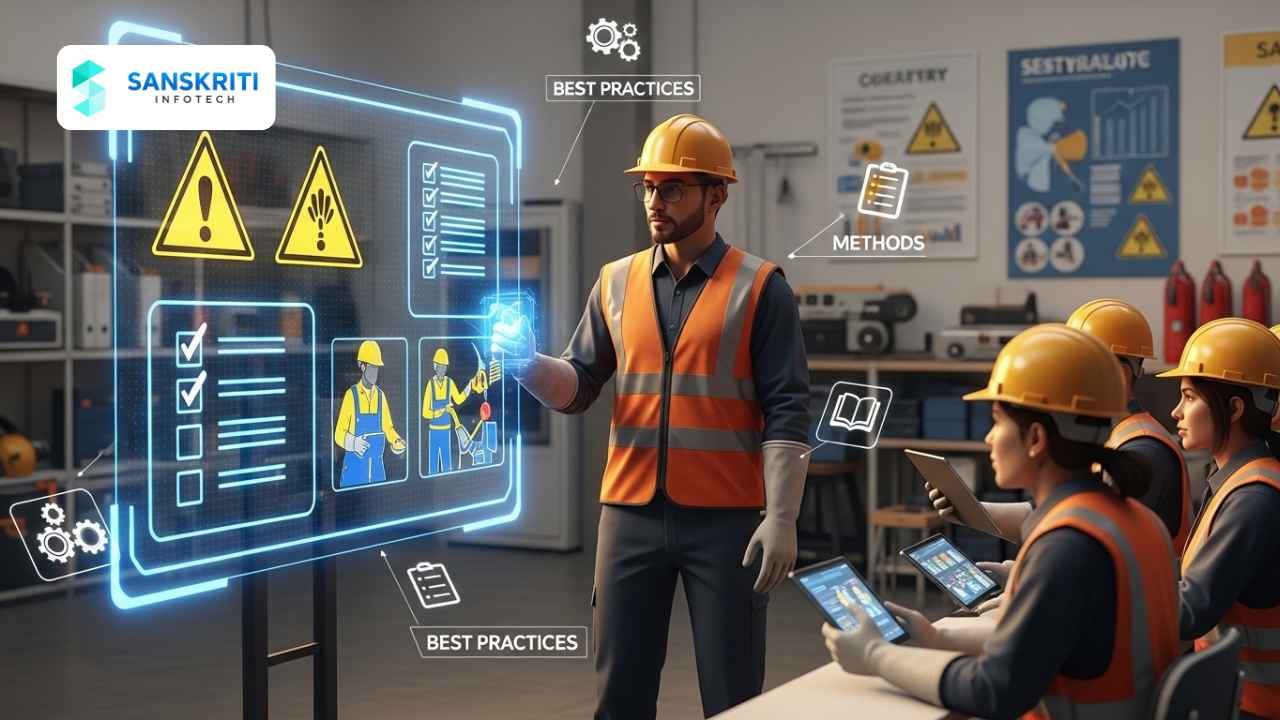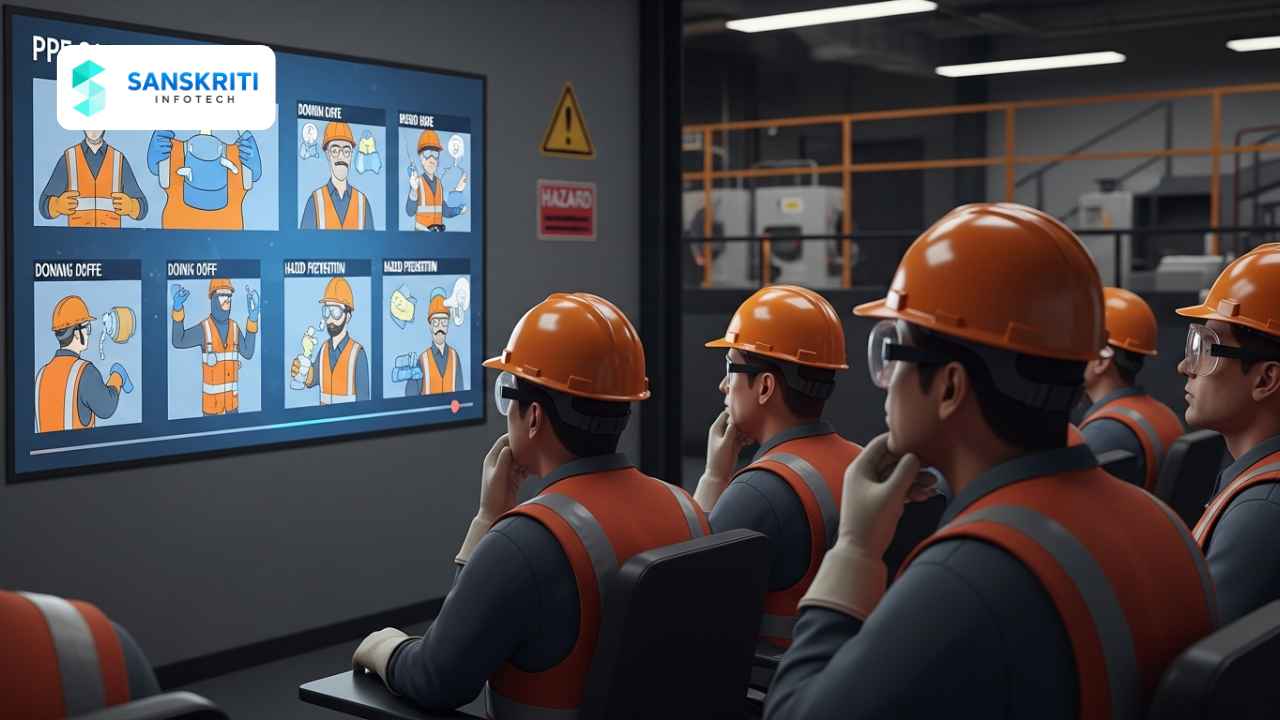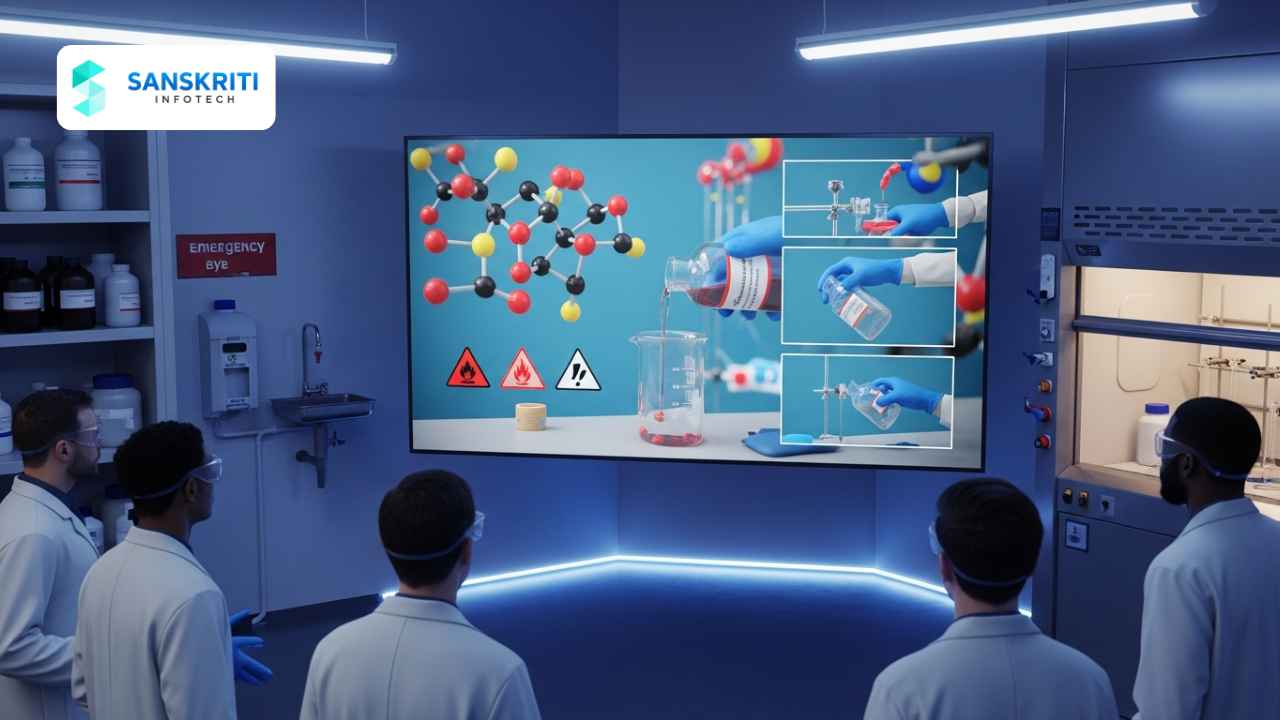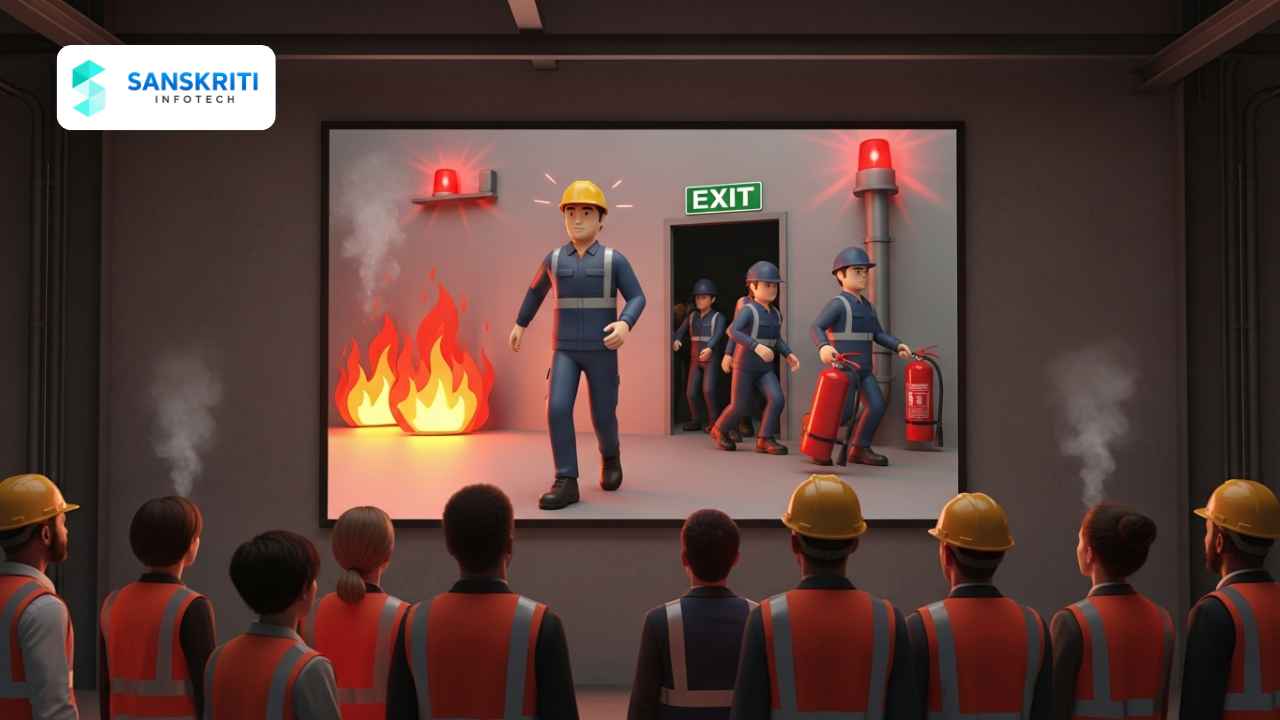Table of Contents
Introduction
Workplace safety training is one of the most crucial elements of an organization’s overall safety management strategy. Whether in manufacturing, oil & gas, construction, logistics, or healthcare, a structured approach to employee safety education can prevent injuries, reduce downtime, and ensure compliance with national and international safety standards. Despite its importance, many companies still treat safety training as a one-time activity rather than an ongoing process. For global statistics and the critical need for workplace safety, see the ILO Workplace Safety page.
At Sanskriti Infotech, we understand that effective workplace safety training goes beyond compliance. Our 3D animation-based safety training solutions are designed to make safety awareness engaging, relatable, and long-lasting. In this blog, we’ll explore why workplace safety training matters, its benefits, various types, and best practices that organizations can adopt to build a strong safety culture.
What is Workplace Safety Training?
Workplace safety training refers to a series of educational programs designed to equip employees with the knowledge and skills needed to prevent workplace accidents and handle emergencies effectively. The goal is to create awareness of potential hazards, establish safe operating procedures, and ensure compliance with occupational safety laws. Effective safety training should be proactive, consistent, and adaptable to each job role and environment.
Why Workplace Safety Training Matters
An effective workplace safety training program saves lives, boosts morale, and improves productivity. According to the International Labour Organization (ILO), over 2.3 million people worldwide die annually from work-related accidents or diseases. Training employees to identify hazards, follow protocols, and respond in emergencies is critical to preventing such incidents. Learn more about federal safety standards at OSHA Safety Training.
Organizations with regular safety training programs witness:
- A reduction in workplace incidents and near misses
- Improved compliance with OSHA, ISO 45001, and local safety regulations
- Higher employee confidence and operational efficiency
- Reduced financial losses from accidents and downtime
Key Benefits of Safety Training
- Prevention of Accidents – Employees learn to identify and mitigate hazards before they escalate.
- Improved Compliance – Helps organizations meet safety laws and industry-specific standards.
- Enhanced Employee Morale – Workers feel valued and safe, leading to better engagement.
- Lower Costs – Reduces compensation claims, repairs, and downtime.
- Stronger Safety Culture – Promotes responsibility and accountability at every organizational level.
Types of Workplace Safety Training
Different types of workplace safety training address specific risks and environments. Common types include:
- General Safety Induction Training – Introduces company safety policies and emergency procedures.
- Job-Specific Training – Focuses on hazards related to a particular task or equipment.
- Emergency Response Training – Covers evacuation, fire safety, and first aid.
- SOP and Compliance Training – Ensures workers follow standardized operational processes.
- Behavior-Based Safety Training – Focuses on promoting positive safety behaviors and attitudes.
- Contractor and Visitor Safety Training – Ensures external personnel are aware of site-specific risks.
Challenges in Traditional Safety Training
Traditional safety training methods, such as PowerPoint slides and printed manuals, often fail to capture attention or deliver lasting impact. Employees may find the content monotonous and struggle to recall procedures during real emergencies.
Common challenges include:
- Low engagement and information retention
- Inability to visualize high-risk scenarios safely
- Language barriers across diverse teams
- High cost of conducting repeated in-person training
- Limited accessibility for remote or rotating staff
Modern Approaches: 3D Animation, VR, and Digital Learning
Modern safety training solutions, such as 3D animation and virtual reality (VR), are transforming how organizations train employees. These tools allow workers to experience real-life hazards in a simulated environment, reinforcing learning through visuals and interactivity. Sanskriti Infotech is at the forefront of this transformation, offering tailor-made 3D safety training modules that combine realism with simplicity.
Our digital learning models include:
- Interactive 3D safety animations
- VR-based emergency simulations
- Mobile-friendly microlearning safety modules
- Digital twins for site-specific safety walkthroughs
How Sanskriti Infotech Elevates Workplace Safety Training
Sanskriti Infotech offers comprehensive workplace safety training solutions built on innovation, customization, and compliance. Our approach helps companies improve engagement, reduce training costs, and ensure every employee understands their role in maintaining safety.
We specialize in:
- 3D safety induction videos
- SOP animation modules
- VR/AR-based safety simulations
- Contractor and visitor safety inductions
- Multilingual e-learning platforms for global workforces
Creating a Safety Training Checklist
A safety training checklist ensures consistency, accountability, and compliance across the organization. Here’s a sample checklist to guide implementation:
- Identify potential workplace hazards
- Define training objectives and topics
- Assign responsibilities to safety officers or trainers
- Develop engaging materials using animations and simulations
- Conduct training sessions for all employees and contractors
- Evaluate understanding through assessments or quizzes
- Review and update training content regularly
Best Practices for Implementing Workplace Safety Training
- Integrate visual learning such as 3D animations and videos for better engagement
- Conduct refresher training periodically
- Customize training content for different job roles
- Collect feedback and continuously improve training programs
- Align training with regulatory standards like OSHA, ISO 45001 Safety Standards, and national safety laws
Conclusion
Workplace safety training is an ongoing investment that pays off through reduced incidents, improved compliance, and enhanced productivity. By adopting modern methods like 3D animation, VR, and digital learning—delivered by Sanskriti Infotech—companies can build safer, smarter, and more confident teams. For ongoing trends, see the National Safety Council.






